#marsh fritillary
Text


Marsh Fritillary and Green Hairstreak at Magdalen Hill, Hampshire yesterday and on Thursday.
#marsh fritillary#magdalen hill#magdalen hill down#south downs#winchester#green hairstreak#butterfly#butterflies#hampshire#england#uk#world#europe#earth#spring#colourful#2024
4 notes
·
View notes
Text

Marsh Fritillaries (Euphydryas aurinia), family Nymphalidae, and 3 species of Blues , (Polyammatus icarus), (Plebeius anteros), and (Polyammatus eros), family Lycaenidae, İspir, Erzurum , Turkey
photograph by Bahar Bilgen
#butterfly#fritillary#euphydryas#nymphalidae#blue#polyammatus#plebeius#lycaenidae#lepidoptera#insect#animals#nature#europe#middle east
987 notes
·
View notes
Note
Why did you let Skitter on the team?
she's got the goods (ants, bees, wasps, spiders, horntails, sawflies, beetles, weevils, cockchafers, billbugs, pillbugs, butterflies, ladybugs, fritillaries, moths, swifts, cassiflies, cockroaches, crickets, grasshoppers, locusts, katydids, diplurans, damselflies, dragonflies, earwigs, fleas, gnats, midges, water scorpions, slugs, aphids, cicadas, froghoppers, ground pearls, jumping plant louses, kermes, laefhoppers, mealybugs, grape phylloxera, lanternflies, cottony-cushion scales, ice bugs, mantispid, owlflies, spongillaflies, chewing lice, bird lice, rhynchophthirinans, human lice, pubic lice, mantids, mayflies, psocids, thrips, termites, strepsipterans, assassin bugs, ambush bugs, backswimmers, bat bugs, bed bugs, coreid bugs, creeping water bugs, damsel bugs, flat bugs, flower bugs, lace bugs, marsh treaders, giant water bugs, chinch bug, stinkbugs, unique-headed bugs, water boatmen, leaf insects, webspinners, bristletails, diplurans, proturans, springtails, roly polys, buffalo treehoppers, calponia harrisonfordi, bombardier beetles, vampire moths, aha has, toe bitters, tongue-eating lice, titan beetles, filbert weevils, giant wetas)
120 notes
·
View notes
Text

To the lighthouse
Country Life | Published 29 July 2020
Guest-Edited by HRH The Princess Royal
The Princess says: ‘This garden is slightly off the beaten track! The photographer picked a very good day to capture it. This is Northern Lighthouse Board territory—I’ve been there three times now and sailed past it on a number of occasions. The garden is looked after astonishingly well.’
THERE are two ways to reach the lighthouse at Rubh’A’Mhail, or Ruvaal, on the north-east point of Islay: by boat or by walking for more than two hours across The Hill, a windswept wilderness of cotton-grass bogs and heather moorland riddled with gullies, waterfalls and burns. Those that make the journey to Howard and Suzanne Cobb’s one-acre garden, where salt-laden storms can sometimes topple a grown man, will be amazed at what has been coaxed into growing in this barren landscape of exposed rock and topsoil that is, in places, only 1in deep. They will be even more surprised that this horticultural miracle is the work of a slender, 5ft 1in-tall, 75-year-old woman—yet the indomitable Mrs Cobb, who made and maintains this garden pretty much singlehandedly, is a gale force to be reckoned with.
Rugosa roses cock a snook at the wind and mounds of improbably delicateRosa Alba Semiplena and soft-pinkR . Celeste have braved the odds to become 5ft-plus-high bushes. In the shelter created by the shrubs and trees, bistort and buddleia, astrantias, nepeta and hardy geranium are a few that have made this rugged ground their home.
Tucked into precious pockets of soil are masses of small bulbs that light up the garden in spring. On the upside, the Gulf Stream holds off all but a couple of frosts a year and old-fashioned favourites, such as lupins, sweet williams and pinks, generally thrive in this fully organic garden. Everything is generously enriched with homemade compost —enhanced by the secret ingredient of seaweed that’s washed up on to the beach by the winter storms, gathered into rich trailer loads and transported home behind a quad bike.
Due to the secluded and modest nature of the garden at Ruvaal, Mrs Cobb was astonished when she learned The Princess Royal had singled it out as one of her favourites. ‘Princess Anne must go to so many wonderful places and yet she’s picked my humble garden,’ exclaimed Mrs Cobb, before explaining that The Princess first visited 25 years ago, as part of her role as patron of the Northern Lighthouse Board (NLB). ‘The garden was still in its infancy then, although she did admire my cabbages. When she next came, she noted how everything had grown and the third time, she seemed quite impressed—I think because it’s in such an exposed and unlikely location. Or perhaps it was the chocolate cake I served on that occasion!’
Even the insect life is undeterred by the remoteness. Butterflies adore this garden. Last year, Mrs Cobb counted 57 painted ladies on one privet. Regulars include the marsh and dark green fritillaries, small copper, small blue, peacock, small tortoiseshell and red admiral. The hummingbird hawk-moth feeds on the red valerian and bumblebees love the cotoneasters, which do well here.
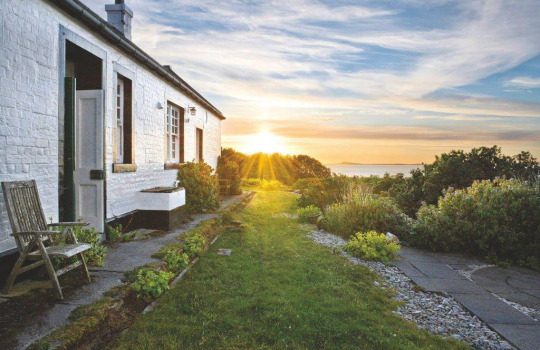
Birdlife proliferates. Golden eagles soar above and sea eagles fly past, with smaller birds—yellowhammers, meadow pipits, reed buntings, dunnocks, redpolls, whitethroats, stonechats and goldfinches—congregating in the shadow of the lighthouse, too. There are also resident blackbirds, a nesting song thrush and swallows that nest in the porch. However, the most unusual visitor is the cuckoo: one year, Mrs Cobb counted three.
‘I had wanted to live on the west coast of Scotland ever since I was 11 years old and came here with my parents,’ admits Mrs Cobb who, until 26 years ago, resided in Buckinghamshire. When her husband’s work began to involve regular travelling, which meant that there were no longer restrictions on where they lived, the couple decided to look for somewhere fairly remote with a bit of land close to the sea. One day, Mrs Cobb spotted an advert for a former lighthouse keeper’s cottage on Islay, which had views of Colonsay, Mull and Jura, and they felt they ought to take a look.
The cottage (originally two, knocked into one) stood in the curtilage of the 112ft lighthouse, which had been completed in 1859 and was fully automated in 1983. There were few windows, which made the rooms terribly dark, and the water supply was described as ‘spasmodic’. Indeed, it was so poor that the Cobbs would not have been able to run a washing machine. The garden consisted of nothing but one redcurrant bush and some rogue potatoes in the former vegetable patch. Nonetheless, despite the inaccessibility of the site and the fact there were only two small co-op shops on the island (there are, happily, plenty of distilleries) the Cobbs were smitten, and have never looked back.
‘Howard was away quite a lot at the beginning, so I had to learn how to handle a boat pretty quickly,’ Mrs Cobb recalls. She soon had the measure of a 19ft Orkney Fastliner, in which she ferried the workmen back and forth, negotiating the Atlantic swell at the jetty. Eventually, when she was ready to move in, Mrs Cobb and her black retriever-cross Tara brought the last of their belongings to the island in the Fastliner, using her wheelbarrow to make the many journeys up and down the hill from the beach to the house.
On board were some cuttings from her garden in Buckinghamshire, a classic village garden with cottagey plants and winding paths. These weren’t nearly enough to fill the barren acre, but there was much generosity and goodwill from the islanders. A forester gave her a heap of rugosa roses, declaring they should grow well. He also gave her some pines and firs.
Not wanting her to be disappointed, a kind old seafarer who saw her load the roses into the boat said: ‘Ye’ll nae grow roses out there, lassie.’ One day, when Mrs Cobb was setting off home from Port Askaig, an old boy threw a sack of montbretia corms into the bottom of the Fastliner. ‘They’ll spread and protect other things,’ he told her.

The obvious first move would have been to plant a shelterbelt, but, with the garden open to the sea on three sides, complete protection would have spoiled the views—on a clear day, as well as the islands, it’s possible to see the mountains of Glencoe 65 miles north on the mainland. Instead, Mrs Cobb planted the evergreens on the land side and put in rowans and birches that grew into multi-stemmed bushes. After a slow start, the evergreens took hold and stand a good 20ft high today. The rugosa roses have spread, filling the garden with scent, and both Rosa Alba Semiplena, perhaps Mrs Cobb’s favourite, and Celeste have proved tolerant of the salt.

The NLB’s boatman offered some cuttings from his escallonia hedge—which have now blossomed into 6ft- to 7ft-high bushes. Hebe cuttings gathered from a shrub outside a former police station 30 miles away have also thrived, despite an early loss: one exceptionally strong gale uprooted a small hebe, sending it bowling across the garden and away over the wall, never to be seen again.
Fuchsia magellanica grows well here, too —both the deep-pink variety and a white that was given to Ruvaal by a friend who was digging out some of hers.


Incredibly, some plants, such as foxgloves, arrive of their own accord, with Mrs Cobb counting 63 digitalis in one bed alone. Other wildflowers—such as celandine, common orchids, scabious and thousands of bluebells —proliferate on The Hill.
For many years, she enjoyed her cedar-wood greenhouse, starting seeds off there and using it to grow tomatoes and cucumbers. Eventually, however, after suffering more than 20 years of Force 10 and 11 gales, it blew down, forcing Mrs Cobb to overwinter her scented-leaf pelargoniums in the lee of the house. Most sweet peas are grown under glass, as, after September, it becomes too windy outdoors for a wigwam. These are now in pots on the table outside the back door where they trail instead.
The original NLB vegetable patch is in full use, despite the predations of two pheasants, which appeared from goodness knows where and have caused such a nuisance that workmen had to make a wire cage to protect the brassicas. Of course, the wily birds soon got around that. ‘I grew kale last year and the wretched pheasant just sat on top of the cage pecking at what grew through the wire,’ laments Mrs Cobb, who, this year, decided to grow a dwarf variety instead.
When the couple first moved in, Mrs Cobb was warned that she would never grow apple trees, but, typically determined, she did and, as have the blackcurrants, these have been a huge success. Mice and voles do help themselves to some French beans (it’s too windy for runners), yet not enough to be a massive problem. Luckily, the deer and rabbits are kept out by the stone wall. ‘The red deer stand there gazing enviously through the gate,’ observes Mrs Cobb, without a great deal of sympathy.
44 notes
·
View notes
Text
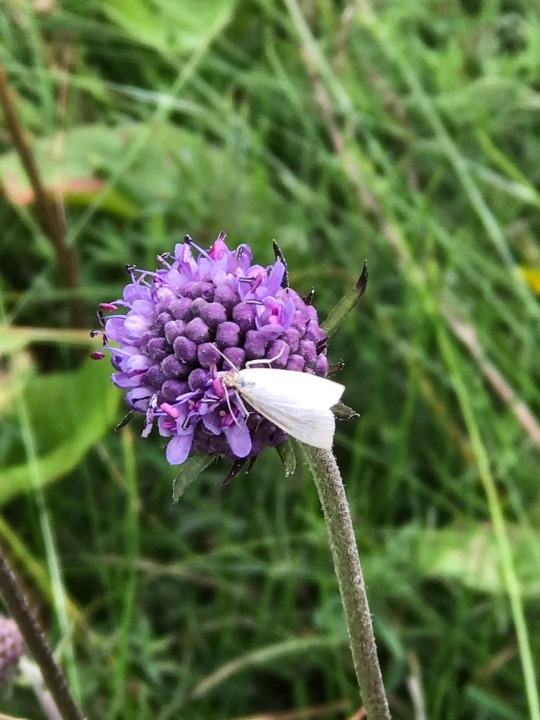

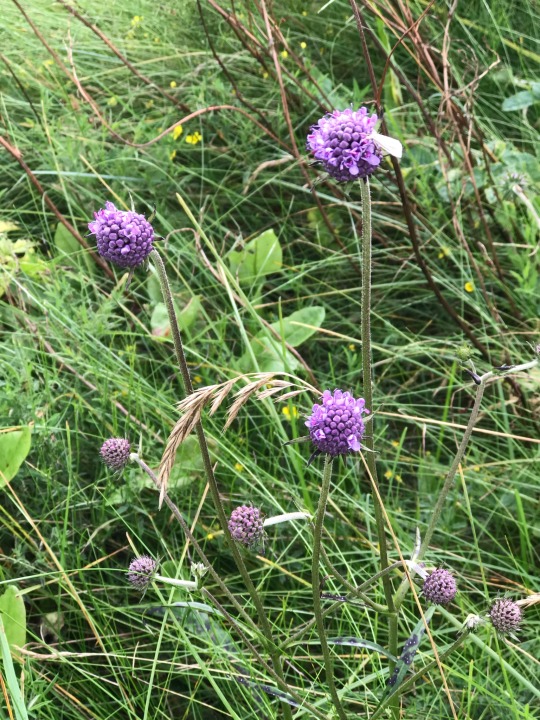

Plant of the Day
Wednesday 7 September 2022
A wildflower of damp meadows, marshes, and riverbanks Succisa pratensis (Devil’s-bit scabious, lady’s pincushion, bachelor’s buttons, blue bonnets) is flowering along the roadsides of Orkney. The flowers provide late season nectar for pollinators and the foliage is the foodplant for the declining butterfly Euphydryas aurinia (marsh fritillary).
Jill Raggett
#Succisa#Devil’s-bitscabious#lady’spincushion#bachelor’sbuttons#bluebonnets#plants#purpleflowers#blueflowers#wildflowers#roadside#horticulture#writtledesign#meadows#nectarsource#pollinatorfriendly#orkney#scotland
77 notes
·
View notes
Text
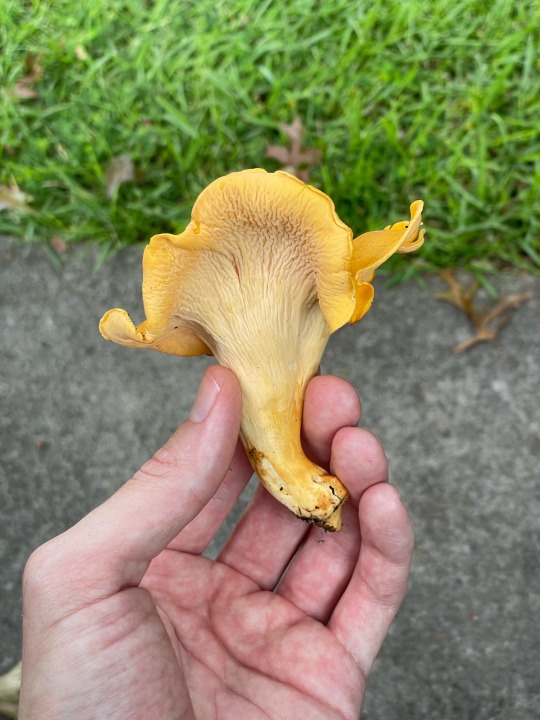




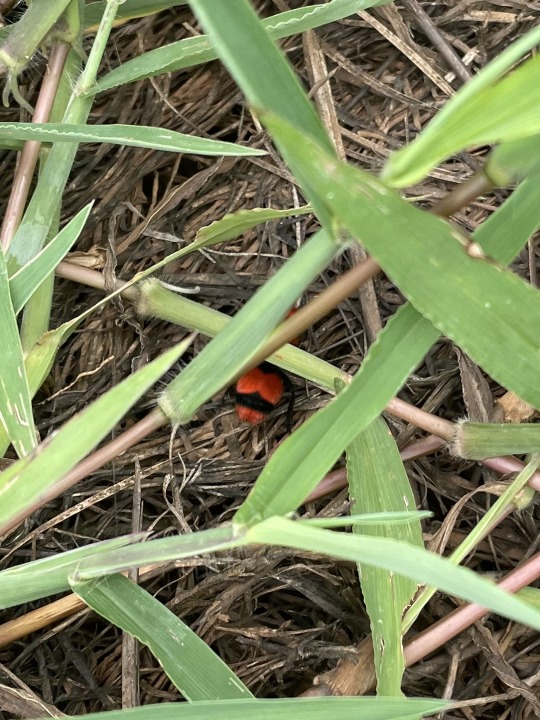

highlights from today: chanterelle i snagged from this person’s woods, terrible photo of a gulf fritillary caterpillar on purple passionflower, the largest sassafras tree ive ever seen, the largest sweetgum tree ive ever seen, salt marsh moth caterpillar, the only pic i managed to get of this velvet ant, bestie/coworker ryan planting native wildflowers in this grassland we’re restoring :3
22 notes
·
View notes
Text
New bird and butterfly survey threatens wind project proposal #IRL
Significant additional information, including a new survey on the endangered Marsh Fritillary butterfly, has been submitted to An Bord Pleanála in relation to a planning application for a proposed 26 turbine wind farm in the Ballivor Bog Group. Bord na Mona Powergen Limited is seeking a ten-year planning permission for the wind farm on the Meath/Westmeath border which would be operational for 30 years from the date of commissioning. The application is a strategic infrastructure development (SID) which means it . . . https://www.wind-watch.org/news/2024/01/24/new-bird-and-butterfly-survey-threatens-wind-project-proposal/
0 notes
Text
Waskerley way (June 2022)
This was a walk from Waskerley in the North Pennine AONB along the C2C cycle path through Burnhill Nature Reserve and back - a total distance of approx. 4.5km.

It was a warm, sunny day with a light breeze. The path follows an old railway track so walking (and cycling) is relatively easy. The view to the North across the Tyne valley was clear to the Cheviots.
Wild flowers grow on both sides of the track: red clover, common speedwell, northern marsh orchids, bird’s foot trefoil, common vetch, cuckooflower, common mouse ear, cat’s tooth & foxglove. These attract many bees and butterflies.
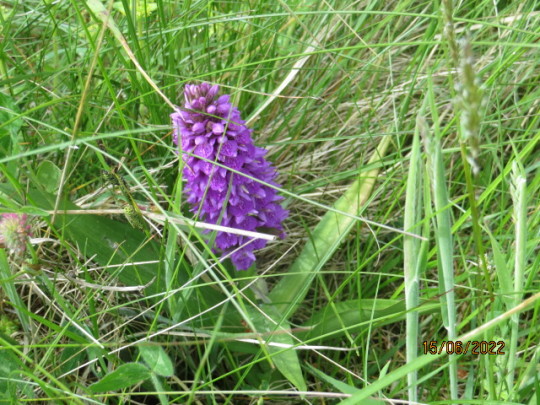
The pasture land on each side of the track is home to sheep, and many nesting birds. Curlew, lapwing, sky larks, chiffchaff, willow warbler, oystercatchers and a distant cuckoo could all be heard. A family of wrens took exception to my presence.
Lots of small white butterflies were on the wing, plus a wall brown, some small heath, a red admiral and some small pearl-bordered fritillaries.


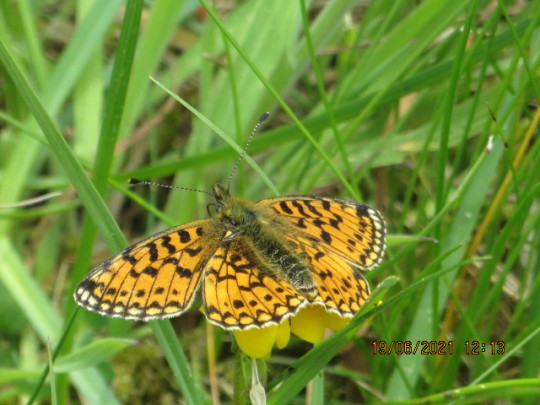


1 note
·
View note
Photo

Marsh Fritillary (Euphydryas aurinia) at Murlough Nature Reserve, Northern Ireland
by Alastair Rose
#marsh fritillary#euphydryas aurinia#euphydryus#nymphalidae#lepidoptera#insecta#arthropoda#uploads#wildlife: uk#nature#entomology#butterflies and moths
36 notes
·
View notes
Text
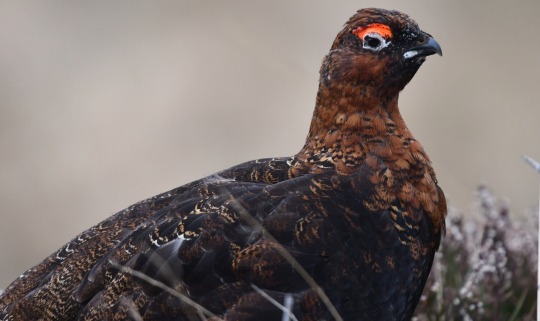

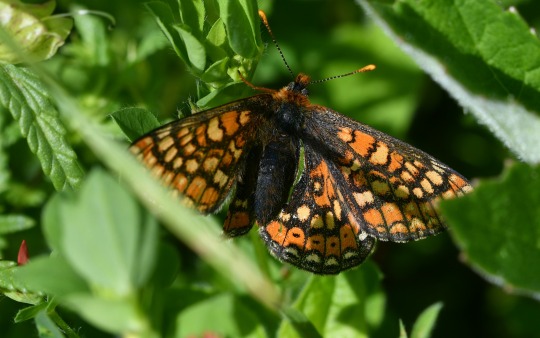

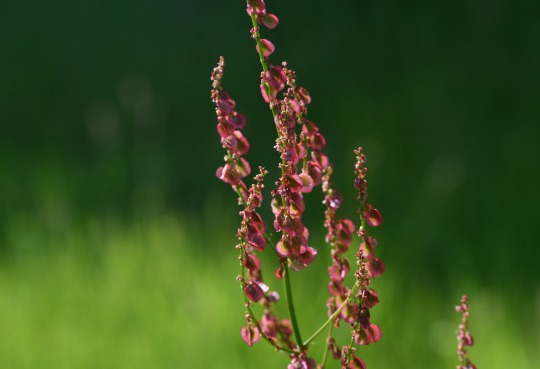
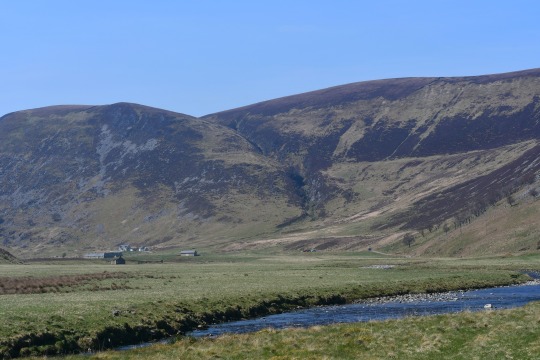
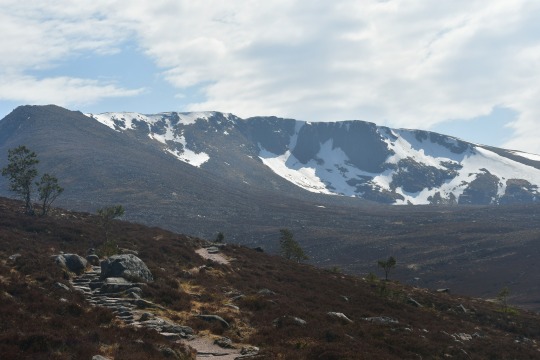
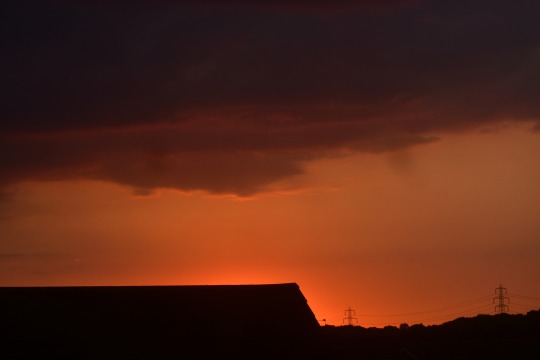
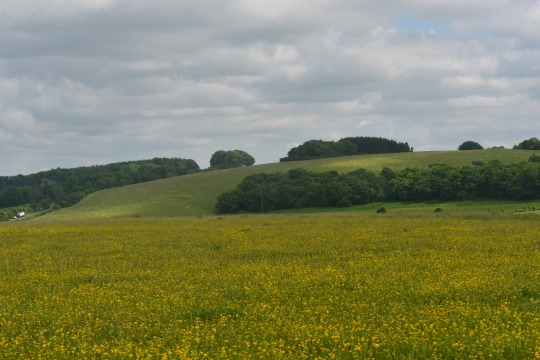
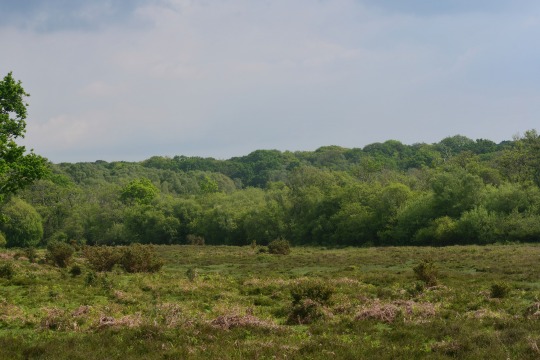
Five of my favourite flora and fauna photos I took in May 2024, five of my favourite landscape photos I took in May 2024 and month summary
The photos are of; Red Grouse at Lochindorb, Red Squirrel at Dell Woods, Marsh Fritillary at Magdalen Hill, Azure Damselfly and sorrel at Lakeside Country Park, views at Strathdearn and Cairn Gorm, sunset at home and views at Magdalen Hill and Pig Bush in the New Forest.
May was another epic, packed and brilliant wildlife watching and photo month for me. Beginning in the midst of our sensational Scotland adventure many of the bird highlights of the holiday were about to unfold in May's early days seeing Black Grouse, precious Dipper, wonderful Golden Eagle, exquisite summer plumage Slavonian Grebe and Ring Ouzel with stars of the trip first seen inside April on the trip and before that enjoyed again such as White-tailed Eagle, Osprey, smashing views of stunning summer plumage Black-throated Diver, Pink-footed Geese, Red Grouse, Common Sandpiper, Goldeneye, Redstart and Willow Warbler. It was very busy for birds when we returned home to Hampshire this month with Swifts at a few locations, Garganey, Reed Warbler, Whimbrel, Garden Warbler, Hobby, Spotted Flycatcher, Tree Pipit, Roseate Tern and valuable chances to see Stone Curlew again on a guided walk added to my year list mixing migratory species I needed to see and stardust birds; another epitomising this the amazing times I saw Cuckoos this month in Hampshire a bird I heard so much throughout the Scotland trip it's always a privilege to see them and I had some breathtaking experiences with them. Whitethroat, Yellowhammer, Sedge Warbler, Great Crested Grebes, Moorhen including chicks seen well with Greylag and Canada Goose goslings enjoyed a lot on patch at Lakeside Country Park and Red Kite were other stars across the month in what was a fantastic month of birds.
May is one of my busiest months of the year as I've still got plenty of bird species to look for and the butterfly season really gets going. It was an incredible butterfly month for me with dynamic and colourful species seen including Large White, Dingy Skipper, Duke of Burgundy, Pearl-bordered Fritillary, Grizzled Skipper, Painted Lady, Small Heath, Brown Argus, Green Hairstreak, Marsh Fritillary, Small Blue, Common Blue, Adonis Blue, quite early Meadow Brown, Small Tortoiseshell, Red Admiral, Peacock, Orange Tip and Speckled Wood getting my butterfly year into a great place. It was a great moth month too with loads of species seen including The Streamer, Garden Carpet, Mint moth, Burnet Companion, Brown Silver-line, Common Heath, Common Carpet, Pale Prominent, Yellow Shells, Hook-streaked Grass-Veneer, elegant Mother Shiptons, Speckled Yellow, Silver Y and Five-spot Burnet seen.
It was a top dragonfly and damselfly month with some super species seen to get me started including Common Blue Damselfly, Azure Damselfly, Blue-tailed Damselfly, Large Red Damselfly, Banded Demoiselle, Beautiful Demoiselle, Hairy Dragonfly and Broad-bodied Chaser and thrilling moments seeing my first ever Downy Emerald at Bentley Wood. It was a real awakening of beetles for me this month with Violet Oil beetle, Green Tiger beetle and Dor beetle seen in Scotland and at Bentley Wood for the green tiger and many Swollen-thighed beetles and Red-headed Cardinal beetles, Oedemera lurida, Cantharis rustica, Cryptocephalus aureolus, Common Malachite, Woodland Dor beetle, Black-striped Longhorn beetle and Garden Chafer enjoyed once home. It was a really good mammal month with Red Squirrel, Red Deer, Brown Hare (seen in Hampshire too) and Stoat seen in Scotland, Roe Deers seen nicely across the month, Fallow Deer and New Forest Pony foals and cattle at Lakeside charming seasonal sights.
It was a wonderful month of plants again with special flower species seen as they took over meadows and other areas including wood sorrel, coltsfoot, oxeye daisies, yellow rattle, buttercups, greater celandine, spurge, early purple orchid, common twayblade, white helloborine, common spotted orchid, burnt-tip orchids, speedwell, forget-me-not, yellow iris, eyebright, lousewort, wood avens, meadow crane's-bill, grass vetchling, foxgloves, crimson clover, red clover, white clover, black and spotted medick, comfrey, cuckooflower, tormentil, bugle, yellow pimpernel, silverweed cinquefoil, sainfoin, fox-and-cubs, mignonette, common rock-rose, hemlock water-dropwort and bird's-foot trefoil. I took in some mesmerising views and sky scenes this month. Have a good June all.
#photography#red grouse#red squirrel#sorrel#azure damselfly#marsh fritillary#2024#may#stoat#roe deer#common malachite beetle#yellow pimpernel#common twayblade#green hairstreak#swollen-thighed beetle#adonis blue#osprey#cuckoo#five-spot burnet#mother shipton#outdoors#walking#birdwatching#butterflies#europe#england#scotland#uk
2 notes
·
View notes
Text
Summer Treasure Hunts!
Where are you two going?
Looking for Butterfllies, are you coming?
Duke of Burgundy Butterflies are rare these days but thanks to the communal spirit of another amateur lepidopterist we find them easily and in return point out an equally rare corn bunting, singing his heart out trying to be noticed.
A Corn Bunting singing from the tallest elder in the hedge of a chalkland cornfield, like a…
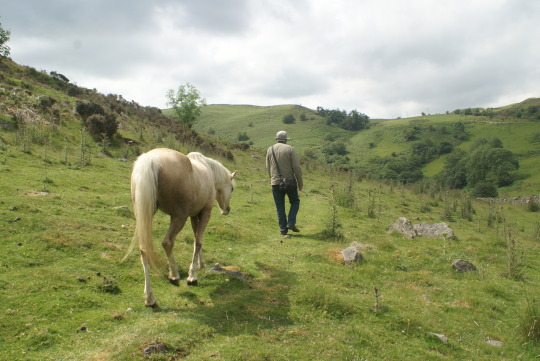
View On WordPress
#Cader Idris#Chiltons#Corn Bunting#Duke of Burgundy Butterfly#Dunwich Heath#Fermin Woods#Marsh fritillary#Painted Lady
1 note
·
View note
Text

Marsh Fritillary (Euphydryas aurinia), family Nymphalidae, Poland
photograph by Piotr Abraszek
172 notes
·
View notes
Photo

Marsh Fritillary (Euphydryas Aurinia), by Benjamin Christophe.
7 notes
·
View notes
Photo


A Pearl Crescent Butterfly poses with a tiny inch worm.
Butterfly: *slurp*
Inchworm: Is you my mudoo?
16 notes
·
View notes
Photo

Fourcolor Macro: Marsh fritillary by doris115
0 notes
